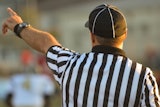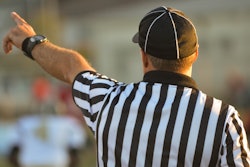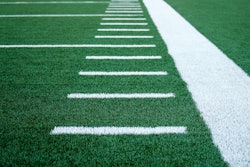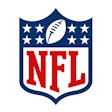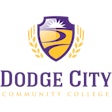![[Illustration by Arnel Reynon]](https://img.athleticbusiness.com/files/base/abmedia/all/image/2016/08/ab.Legal716_feat.png?auto=format%2Ccompress&q=70&w=400)
This article appeared in the July/August issue of Athletic Business. Athletic Business is a free magazine for professionals in the athletic, fitness and recreation industry. Click here to subscribe.
One of the biggest issues facing sports administrators is the long-term effect of head injuries and concussions on athletes. Leagues and organizations from youth sports to the professional level have taken steps to prevent their players from suffering or exacerbating the adverse impacts of head injuries, typically starting with the implementation of concussion management protocol that requires evaluation and clearance by a physician before an athlete with a suspected head injury can return to play.
While concussion management protocol is easily transferred to trained medical personnel at the professional and college levels, at the high school and youth sports levels the responsibilities to assess an injury, including player head injuries, too often falls to coaches. What happens, however, when a coach or school fails to follow proper protocol? This was the question posed in Amy Dugan v. Thayer Academy, 32 Mass. L. Rep. 657 (2015).
SUCCESSIVE HEAD BLOWS
As a junior on the Thayer Academy varsity field hockey team, Amy Dugan suffered an injury when hit in the head by a field hockey ball during a game. Thayer Academy coach Erin Cash witnessed the incident but failed to remove Dugan from the game or attempt to determine whether she had suffered a concussion. Furthermore, Dugan's parents claim that at no time during or after the game did Cash ask Dugan if she had any symptoms related to the head injury or to communicate the nature of the injury to them, the Thayer athletic director, the school nurse or any medical professional.
Dugan was allowed to participate in team practices throughout the next week even though she had not been evaluated or cleared to play. During the team's next game, Dugan was struck in the head when she collided with an opposing player. Again, Cash witnessed the collision and failed both to determine whether Dugan had suffered an injury or remove her from the game. As a result of the two injuries, Dugan filed a lawsuit against the coach and Thayer Academy claiming that the coach was negligent for failing to follow reasonable injury procedure by neglecting to get Dugan evaluated after the injury, withholding information of the injury from her parents and school trainers, and permitting her to play in the next game without clearance, which resulted in another injury.
In support of their argument, the Dugans pointed to Massachusetts Law 4G.L.c 111 §222, which requires that:
"If a student suffers a concussion as diagnosed by a medical professional, or is suspected to have suffered a concussion while participating in an extracurricular athletic activity, the student shall not return to the practice or competition during which the student suffered, or is suspected to have suffered, a concussion and shall not participate in any extracurricular athletic activity until the student provides written authorization for such participation, from a licensed physician, licensed neuropsychologist, certified athletic trainer or other appropriately trained or licensed health care professional as determined by the department of public health, to the school's athletic director."
RECKLESSNESS VS. NEGLIGENCE
The coach and school argued that because Dugan chose to play in a competitive sporting event, she can only pursue tort claims against them upon an allegation that they engaged in willful, wanton or reckless conduct — not the ordinary negligence standard they put forward. In looking at the duty a coach owes his or her own players, the Superior Court in Massachusetts acknowledged that Cash and the school are correct, to a degree. Generally, the courts require players injured on the field during a sporting event to prove recklessness in order to pursue a personal-injury claim against an opposing team's player or coach.
In refusing to extend the same reckless misconduct standard to a claim against a player's own coach, the court noted that the duties of a coach to his or her own players are different from the duties of a coach to the players on the opposing team. The court noted that the heightened burden of proof was adopted for claims against an opposing player or opposing coach to prevent the ordinary negligence standard from decreasing the intensity of competition. If a player or coach had to think about using reasonable care in competing with an opposing player or team, it might diminish certain contact or physical play out of fear of liability.
While a player's own coaches must also think about winning, they also have to look out for and safeguard the best interests of their own team and its individual players. As a result, the court held that a player's own coach must exercise the degree of care of a reasonably prudent coach (i.e. the negligence standard) and may face liability without proof of recklessness.
The fact that the alleged wrongful conduct occurred in connection with the conduct of a sport does not mean the recklessness standard must apply. This case fundamentally involves allegations involving failure to obtain medical evaluation and care, not the manner and means of competition. Nothing in the heat of competition should release a coach of the obligation to assure a player's fitness to engage in the particular type of competition or to secure medical assistance as may be needed, the court found, nor should a coach be relieved of the duty to use ordinary care in the sober evaluation between games of whether a player is fit to take the field.
Setting the standard
While this case does not break any new legal ground, it is important all the same for what it does not do. If the court agreed with the coach and school that the appropriate standard was recklessness and not negligence, it would have shut the doors of the courthouse to a number of lawsuits against coaches, or at least made them harder to get through. If the court had agreed with the argument, coaches would only be liable when they engaged in willful, wanton or reckless conduct. However, by rejecting this argument, the court is saying that coaches must act in a reasonable manner to protect their players and are subject to liability when they fail to meet this ordinary negligence standard.
In addition, with concussions continuing to be examined for long-term risks, this case shows that coaches need to exercise increased caution and care before putting a player back into the game.
Attorney John Wolohan is a professor of sports law at Syracuse University, where Emily Campeas is a senior in the Department of Sport Management.
This article originally appeared in the July/August 2016 issue of Athletic Business with the title "Coach open to negligence claim after concussion protocol failure"













